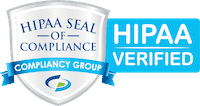OWG completes HIPAA compliance process.
Montville, NJ; March 29, 2022 – OWG is pleased to announce that we have taken all necessary steps to prove our good faith effort to achieve compliance with the Health Insurance Portability and Accountability Act (HIPAA). Through the use of Compliancy Group’s proprietary HIPAA solution, The Guard™, OWG can track our compliance program and have earned their Seal of Compliance™. The Seal of Compliance is issued to organizations that have implemented an effective HIPAA compliance program through the use of The Guard.
HIPAA is made up of a set of regulatory standards governing the security, privacy, and integrity of sensitive healthcare data called protected health information (PHI). PHI is any individually identifiable healthcare-related information. If vendors who service healthcare clients come into contact with PHI in any way, those vendors must be HIPAA compliant.
OWG has completed Compliancy Group’s Implementation Program, adhering to the necessary regulatory standards outlined in the HIPAA Privacy Rule, Security Rule, Breach Notification Rule, Omnibus Rule, and HITECH. Compliancy Group has verified OWG’s good faith effort to achieve HIPAA compliance through The Guard.
“I am so proud of our team and our continued efforts to distinguish ourselves as a best-in-class, technology consulting practice”, explains Nick Rigali, Operating Partner at OWG.” As a firm, we’ve always been dedicated to protecting sensitive data and the personal information of our partners (clients) and our partner’s clients. This certification solidifies those responsibilities and allows us to publicly demonstrate our commitment to security.”
Clients and patients are becoming more aware of HIPAA compliance requirements and how the regulation protects their personal information. Forward-thinking providers like OWG choose the Seal of Compliance to differentiate their services.
About Compliancy Group:
HIPAA should be simple. That’s why Compliancy Group is the only HIPAA software with expert Compliance Coaches™ holding your hand to simplify compliance. Built by auditors, Compliancy Group gives you confidence in your compliance plan to reduce risk, increase patient loyalty, and profitability of your organization. Visit https://www.compliancy-group.com or call 855.854.4722 to learn how simple compliance can be.








